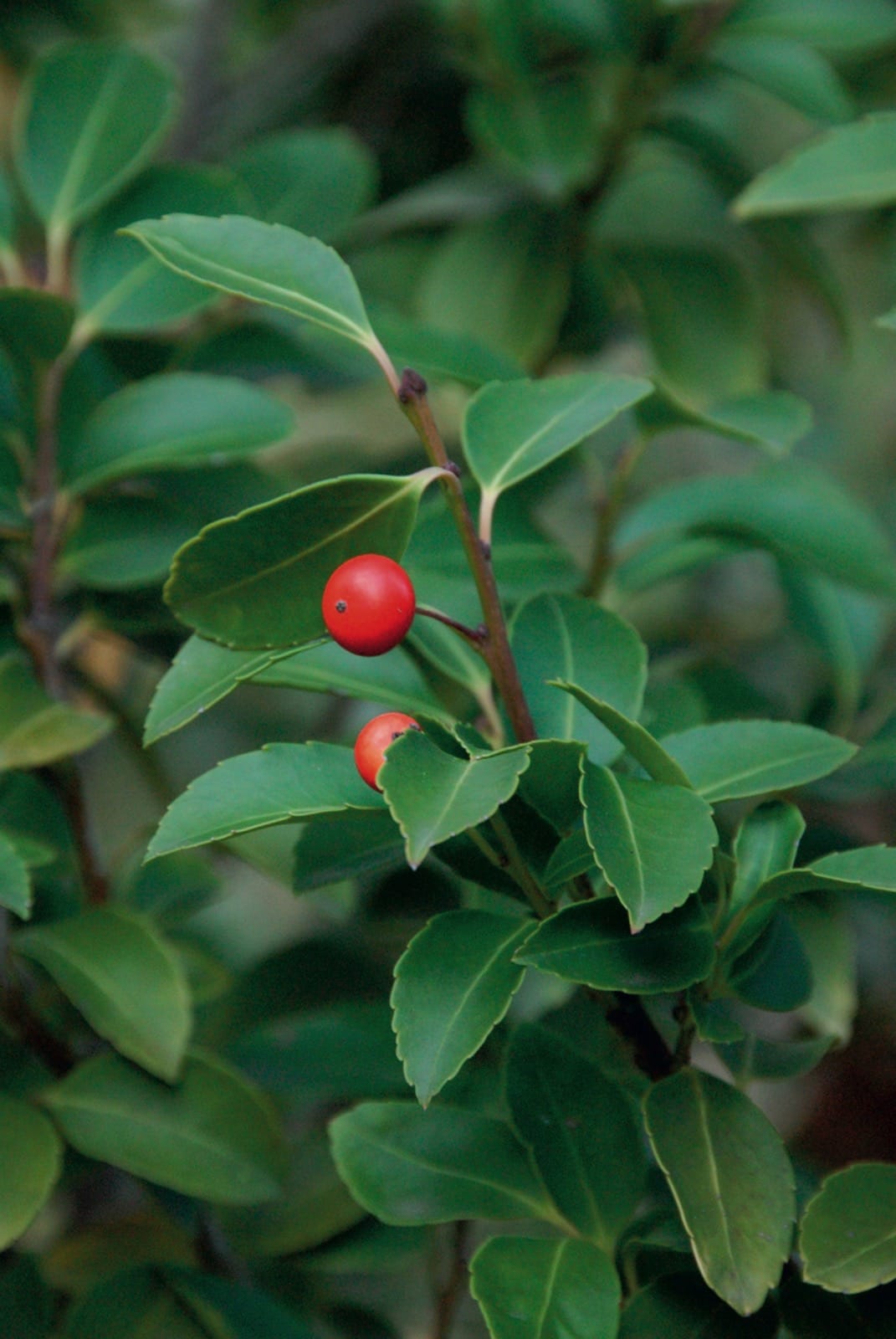Ilex shennongjiaensis
Credits
Article from New Trees by John Grimshaw & Ross Bayton
Recommended citation
'Ilex shennongjiaensis' from the website Trees and Shrubs Online (treesandshrubsonline.
Genus
Other taxa in genus
- Ilex × altaclarensis
- Ilex aquifolium
- Ilex bioritsensis
- Ilex buergeri
- Ilex cassine
- Ilex ciliospinosa
- Ilex corallina
- Ilex cornuta
- Ilex crenata
- Ilex cyrtura
- Ilex decidua
- Ilex dipyrena
- Ilex fargesii
- Ilex forrestii
- Ilex geniculata
- Ilex glabra
- Ilex hayatana
- Ilex hookeri
- Ilex integra
- Ilex intricata
- Ilex kingiana
- Ilex laevigata
- Ilex latifolia
- Ilex linii
- Ilex macrocarpa
- Ilex melanotricha
- Ilex mitis
- Ilex montana
- Ilex nothofagifolia
- Ilex opaca
- Ilex pedunculosa
- Ilex perado
- Ilex pernyi
- Ilex purpurea
- Ilex rotunda
- Ilex rubra
- Ilex rugosa
- Ilex serrata
- Ilex spinigera
- Ilex verticillata
- Ilex vomitoria
- Ilex yunnanensis
Small tree to 10 m, 0.25 m dbh. Branchlets reddish brown, glossy. Leaves evergreen, thickly leathery, 2.5–4(–5) × (1–)1.5–2.5(–3) cm, elliptic-ovate, upper surface glossy dark green, glabrous, lower surface dull yellowish green, six to seven secondary veins on each side of the midrib, though obscure, margins minutely serrate or crenate, apex acute, minutely mucronate; petiole pubescent, 0.25–0.4 cm long, deeply grooved. Inflorescences axillary, solitary. Flower details unrecorded. Fruit globose to subglobose, dark cherry-red, glossy, 0.8–1.2 cm diameter, with four to five pyrenes. Fruiting August to September (China). Bartholomew et al. 1983, Dudley 1983, Chen et al. 2006. Distribution CHINA: western Hubei (Shennongjia forest). Habitat Forests between 1800 and 2100 m asl. USDA Hardiness Zone 8. Conservation status Not evaluated. Illustration Dudley 1983; NT404.
Ilex shennongjiaensis was discovered and introduced to cultivation by the Sino-American Botanical Expedition to Western Hubei in 1980, and all plants in horticulture are apparently derived from this introduction, under the expedition number SABE 1554. The species was included in the seminal analysis by Michael Dosmann and Peter del Tredici (2003) of the success of a seed-collecting expedition (see also p. 23). Dosmann and del Tredici found that I. shennongjiaensis, though new to both science and horticulture and thus of considerable interest, was represented in only two botanical institutions – and in both cases only by male plants. For a tree whose chief interest lies in its fruits this is not an ideal situation, and not exactly good for the gene pool either! Material has been distributed by one of these institutions, the US National Arboretum, and it is to be assumed that all cultivated specimens of I. shennongjiaensis are male (and WLTM …). In 2007, however, Richard Olsen of the US National Arboretum reported that the three growing there had produced a sparing crop of fruit. Occasional perfect flowers have been reported in hollies (Galle 1997), so this may be the explanation here too. All three are about 2 m tall, of pyramidal shape, but not densely leafy (R. Olsen, pers. comm. 2007). Material of the USNA accession NA 49246 C proved to be ‘very hardy’ at Heronswood, and good tolerance of colder conditions has been predicted (Heronswood Nursery catalogue 1999). This clone was sold for several years by Heronswood Nursery and is probably the one most widely represented in cultivation. For example, it is grown at Arboretum Trompenburg where, like most specimens now beginning to appear in collections, it is still a small plant. Until the elusive female is introduced, these bachelors are destined to remain neat small trees with dark green foliage, but female trees would bear normal red berries.

